Bristol hopes to double riding population by 2020
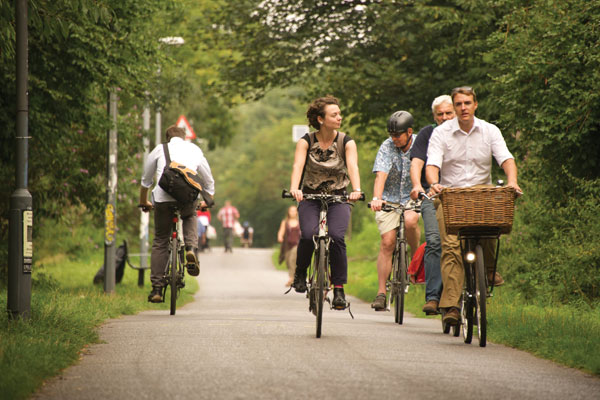
Bristol is doing some great work for cyclists, doubling bike use between 2001 and 2011, the biggest growth in modal share outside London.
In 2008 it was named Britain's first official ‘cycling city' and though the scrapping of Cycling England in 2010 threw a metaphorical umbrella in the spokes, things are looking up again, thanks to a new cycling-friendly mayor, local campaigning and a raft of new funding.
It's a beautiful sunny morning in Bristol city centre when we go to take a look. Meeting outside the Sustrans HQ, by Bristol's College Green, the sustainable transport charity's local area managers Jon Usher and Rupert Crosbee have both kindly agreed to show CW how and where cycling has been developing in the city.
Usher explains some recent history first. The so-called ‘bonfire of the quangos' in 2010 came just as cycling in Bristol was really making progress.
"With the abolition of Cycling England, there was no ongoing cycling city funding, which resulted in the immediate dispersal of the cycling delivery team, me included, onto other things," he says.
"There was then an 18-month hiatus without any money coming in, and a loss of momentum before the Local Sustainable Transport Fund [LSTF] was announced in 2012."
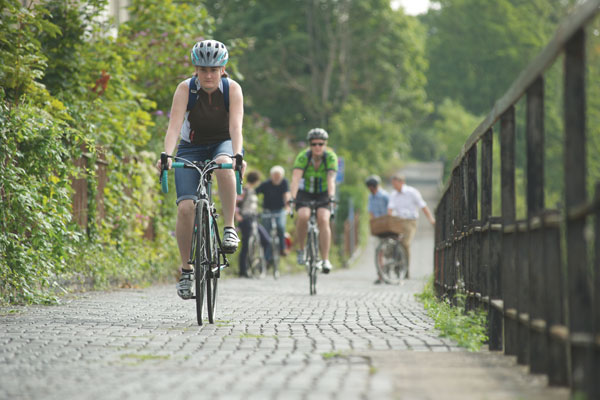
Cycling numbers have shot up over the last five years
Get The Leadout Newsletter
The latest race content, interviews, features, reviews and expert buying guides, direct to your inbox!
Highs and lows
This walking and cycling dispersal was mirrored in Bristol City Council. Just before we set off, John Richfield, Bristol's senior engineer for cycling policy, joins us on our tour. Holding one of the council's two remaining cycling-specific posts (of a former five), with 12 years' service in the council, he's seen all the highs and lows.
We head for Queen Square, one of the success stories, where shared gravel paths now converge around a statue of William III. In the 18th century this was the Bristol address, before being upstaged by nearby Clifton and then, in the 20th century, bisected diagonally by the A4.
Now it's dotted with people heading to work on foot and increasingly, on bike.

One of Bristols docks' narrow bridges
Richfield explains: "This square was once a horrendous urban motorway. There was resistance over the redevelopment from local firms, who said it would kill them, but since it's been put in, people have been very pleased and rents in the city have actually gone up.
"This now means we are able to point to other similar projects in cities and say to their local firms: ‘Your fears won't be realised.'"
Shared walkways
Many of Bristol's pavements and paths are shared with cyclists. Routes like Brunel Mile are so successful, however, with thousands of users each day, that some of this shared space now needs segregating.
On-road segregated routes would seem a good option. We stop on the dual carriageway beside the city's main station, Bristol Temple Meads. This is the UK's only urban enterprise zone, with the station at its heart.
The regenerated Temple Quarter could create 17,000 new jobs. With £20.85m government funding to keep those people moving - plus the nine million that come through the station every year - cycling is a cost and space-effective transport solution, and a network of cycle lanes is being planned.
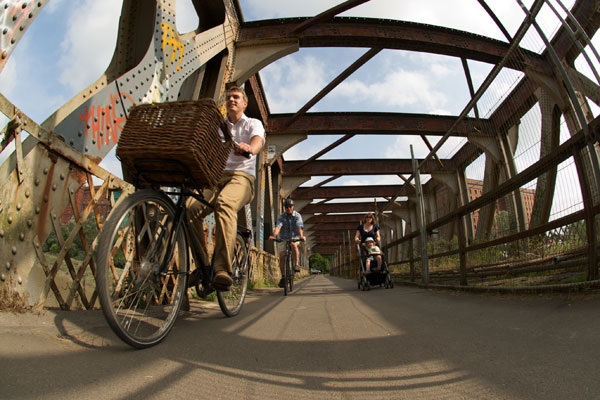
Shared use paths are popular
Bristol has also been allocated LSTF funding, which replaced Cycling England funding, plus a share of £7.8m under the Cycle City Ambition Fund (CCAF) announced in August, which will all help facilitate the mayor's aim to double cycling by 2020.
Richfield has spent 12 years arguing cycling's corner. "I think we're starting to get the network effect, one that's comprehensive enough for people to use without much trouble," he says.
There's a long way to go, however.
The River Avon still presents a natural barrier for cyclists. Along Clarence Road, running alongside the Avon, there are plans under the CCAF for a Dutch-style segregated cycle path, with the so-called banana footbridge halfway along getting a new cycle ramp. However, Clarence Road is bookended by large motorway-style roundabout bridges, which will be more difficult to tackle.
Chocolate Path
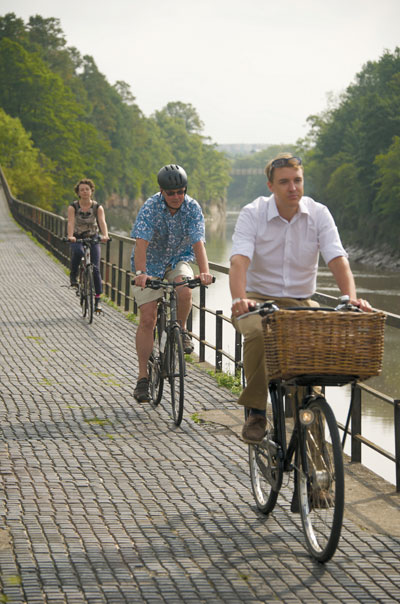
In contrast, the Chocolate Path is a peaceful waterside foot and cycle path between a disused railway track and the Avon, which is due to be widened and upgraded with cycle access onto the existing pedestrian bridge.
However, it takes its name from the pattern of the paving, which can prove treacherous in icy weather and can cause a tramline effect for skinny tyres. Unfortunately, because it's listed, it can't be altered.
A similar problem exists where cycle access to a pedestrian bridge needs to somehow cross the disused railway line without altering its appearance. After the Chocolate Path we ride under the A3029, "Britain's first covered cycle path," as Richfield puts it.
This is part of the Festival Way, comprising pieces of existing and upgraded infrastructure with new routes joining the dots.
As we leave our guides at cycling cafe Roll for the Soul, Richfield is positive about Bristol's cycling future: "There's a lot happening and from the mayor down there's an acceptance and understanding of what has to happen, though not necessarily how. The mayor is able to provide the impetus and give everybody permission to think radically.
"[Mayor] George Ferguson has made a huge difference and set the tone of the discussion here."
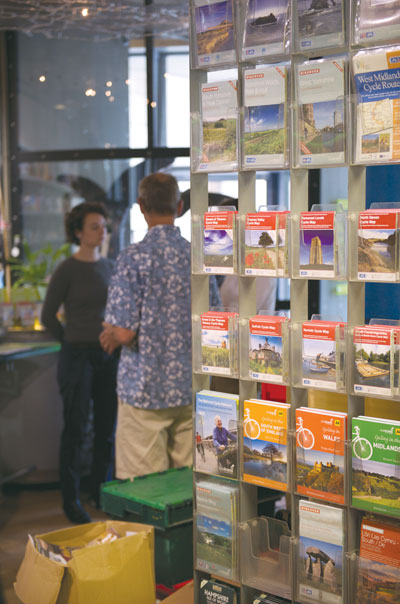
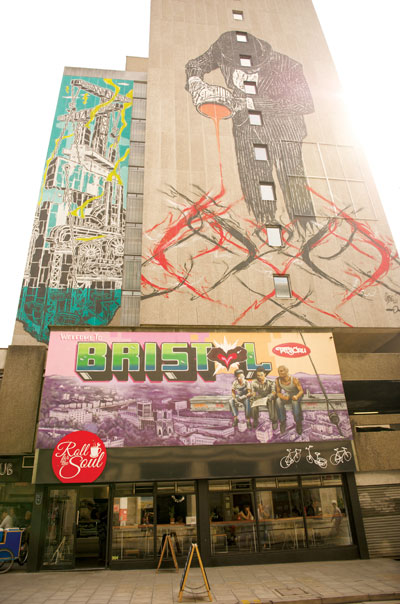
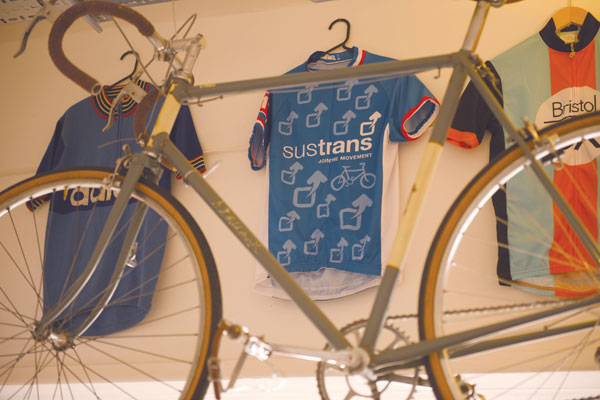
Bristol: the good and the bad
Good:
- Largely polite, considerate drivers
- Many pavements are shared with cyclists: great on busy roads for less confident riders
- A growing network of routes
- A pro-cycling mayor keen on pioneering ambitious schemes, including traffic-free Sundays and residents' parking
- There are some great existing routes and some pioneering infrastructure like pedestrian and cyclist priority at road-shared space junctions, as well as floating bus stops on their way
Bad:
- The hills! Though Park Street, with reputedly a one-in-10 gradient, is well-used by cyclists
- Motorway-style roundabout bridges present a barrier to cycling
- Some listed structures cannot be adapted to better suit cycling
- That bus driver who was caught on CCTV deliberately knocking off a cyclist
The routes
Festival way
Helping people commute by bike, the Festival Way is a nine-mile route from Bristol city centre to Nailsea, via Ashton Court, home to Bristol's balloon fiesta. Where commuters from south of Bristol contend with a tangle of fast A-roads, the popular Festival Way now provides a largely off-road alternative for those who want to cycle, as well as letting mountain bikers ride to the local off-road tracks.
At Kennel Lodge Road, which leads to Ashton Court, however, planning permission was turned down by North Somerset Council for 50 metres of the planned route. Sustrans's Jon Usher was unhappy with that decision. He says: "That was very disappointing. Now you have to go up a really steep hill, though most people opt for a shared path along a dual carriageway to avoid it!
Pedestrian/cyclist priority
This segregated path on Brunel Mile, a popular walking and cycling route, follows a raised surface road crossing, where pedestrians and cyclists have priority. John Richfield explains: "This is the nearest thing we can get to Dutch-style intersections with our current regulations. It has turned really difficult junctions for cyclists into a smooth straight across, and drivers are getting used to the fact that ‘give way' really means ‘give way'."
Segregation needs to move with the times
Pero's bridge near Queen Square is one of the UK's standard three-metre wide shared paths and with pedestrians and buggies using it with cyclists, it's crowded even on a weekday. Neither of them have enough space and Jon Usher and Rupert Crosbee argue that new paths, especially bridges, which can't be widened later when cycling increases, need to be at least four metres wide.
Dutch-style cycle lanes
On Clarence Road, alongside the River Avon, a row of empty parking spaces is going to make way for Bristol's first Dutch-style cycle lane, complete with ‘floating bus stops' (where bike paths go behind bus stops, so cyclists don't have to overtake buses), paid for by Cycle City Ambition Fund money.
This article was first published in the October 10 issue of Cycling Weekly. Read Cycling Weekly magazine on the day of release where ever you are in the world International digital edition, UK digital edition. And if you like us, rate us!

Thank you for reading 20 articles this month* Join now for unlimited access
Enjoy your first month for just £1 / $1 / €1
*Read 5 free articles per month without a subscription

Join now for unlimited access
Try first month for just £1 / $1 / €1
-
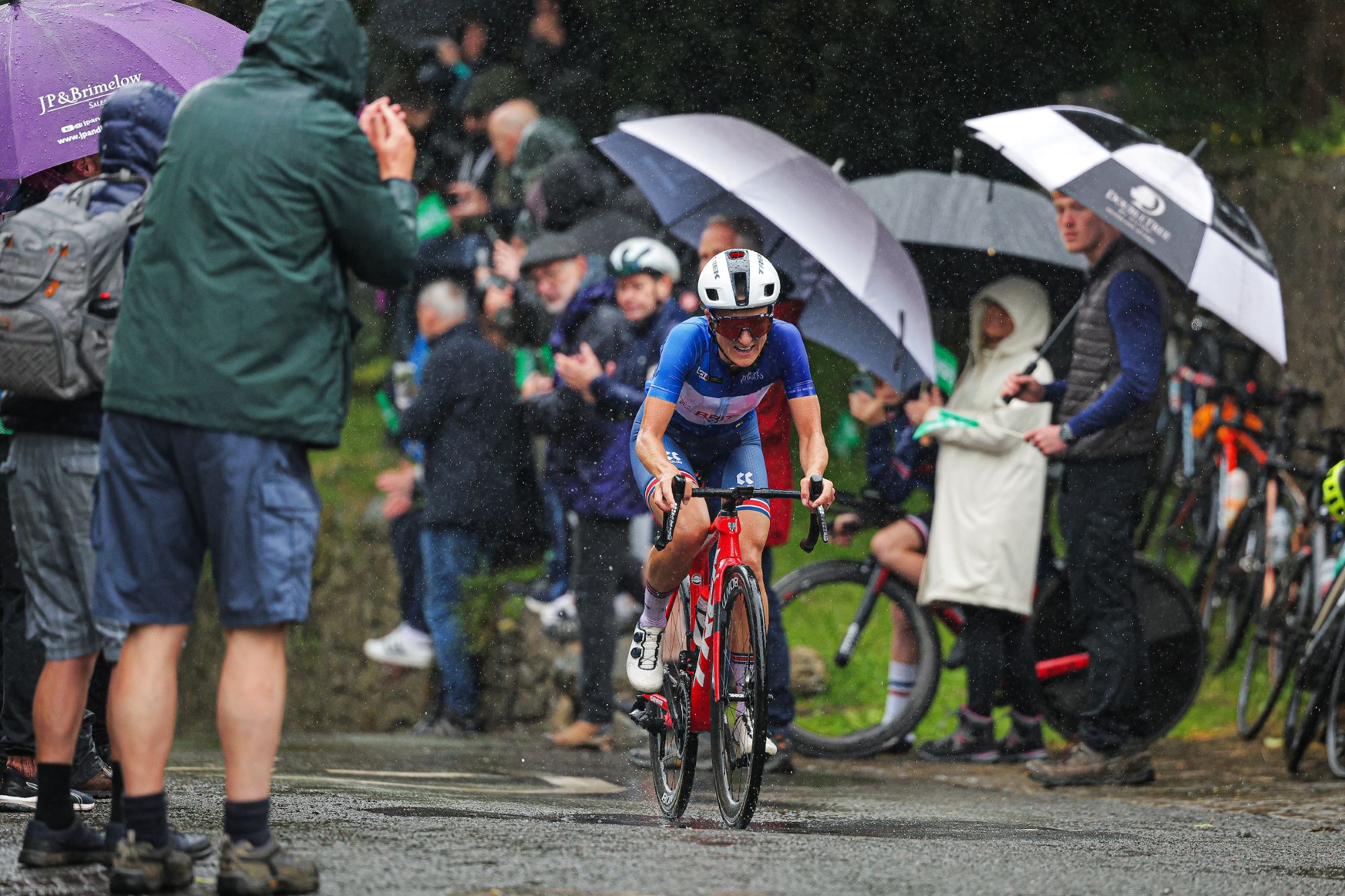 FDJ-Suez, SD Worx-Protime, Lidl-Trek confirmed for Tour of Britain Women as strong list of teams announced
FDJ-Suez, SD Worx-Protime, Lidl-Trek confirmed for Tour of Britain Women as strong list of teams announced18 teams set to take part in four-day WorldTour stage race
By Tom Thewlis
-
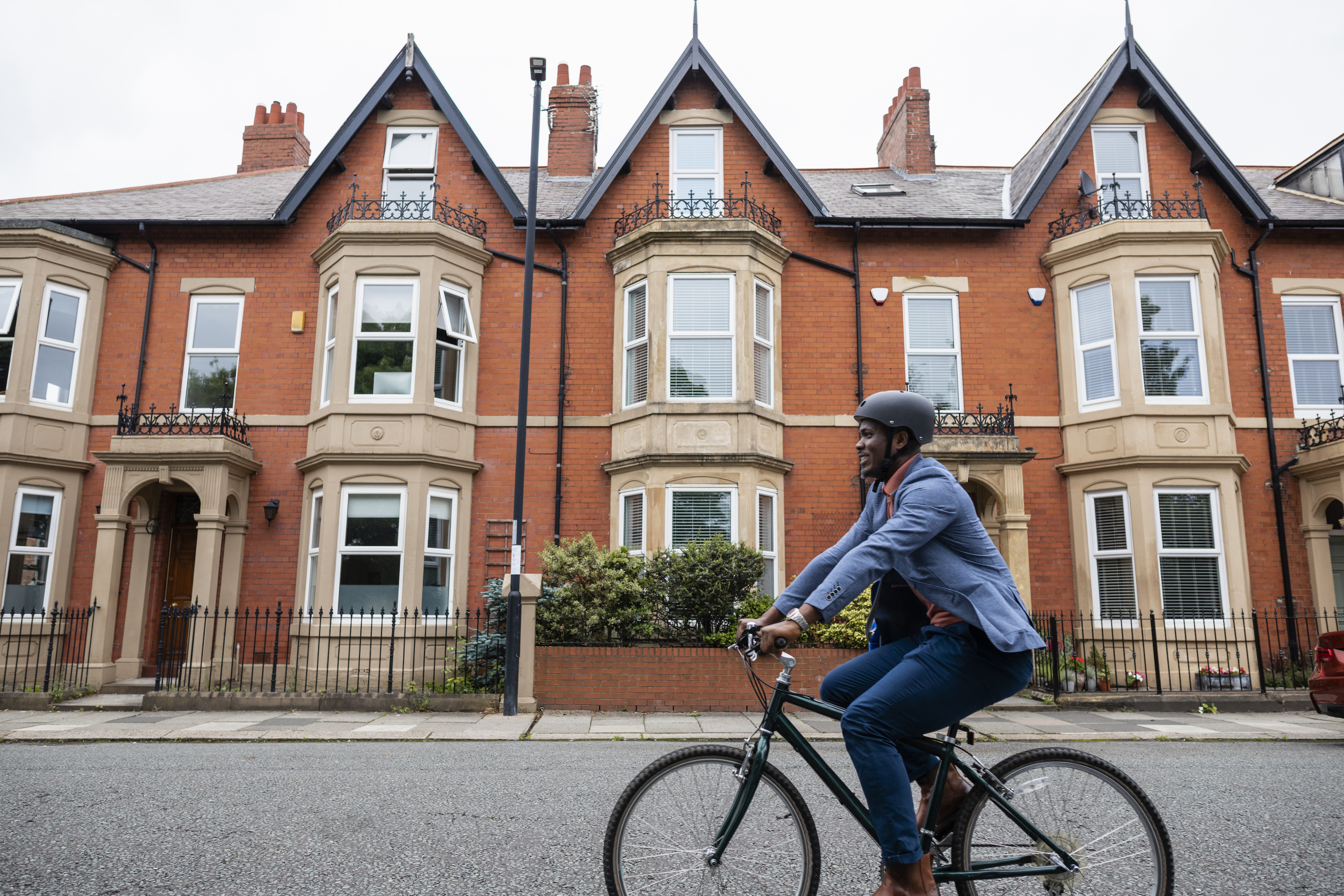 Cyclists could face life sentences for killing pedestrians if new law passed in England and Wales
Cyclists could face life sentences for killing pedestrians if new law passed in England and WalesReckless cycling currently carries a maximum two-year jail term
By Tom Thewlis